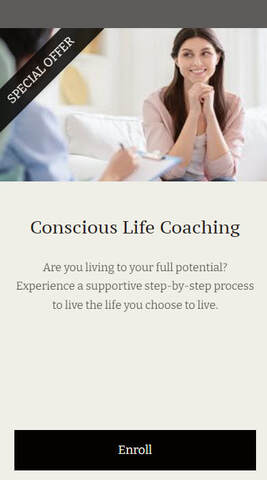|
What distinguishes good positivity from bad positivity? Positivity involves things like gratitude, optimism, and positive reappraisal. You may have heard that positivity is good for well-being. On the flip side, maybe you’ve felt annoyed, angry, or uncomfortable when positivity was forced on you. Indeed, positivity can be good for well-being...if we’re not using it to avoid or suppress negative emotions. Then, it can become toxic. Toxic positivity is defined as the act of rejecting or denying stress, negativity, or other negative experiences that exist (Sokal, Trudel, & Babb, 2020). It can sometimes be difficult to distinguish positivity from toxic positivity. For example, if someone tells us, “Hey, look at the bright side,” we might feel like they are diminishing or denying our negative feelings. Because negative emotions are tools we use to get important needs met, we don’t just want to be shoving them away without acknowledgement. So, seemingly positive advice from friends can often feel like toxic positivity to the person receiving it. Here are a few more examples of toxic positivity:
In these examples, someone is using positivity to get rid of our true or negative experiences. On the other hand, say a friend tells us, “Hey, it’s okay not to be okay.” This shows acceptance of our negative emotions as well as compassion and gratitude. This approach is not toxic because it doesn't deny our emotions and force us to feel something we don’t want to feel. When Does Positivity Become Toxic?1. One study showed that looking for silver linings is only beneficial in uncontrollable contexts. For example, if we lose our job, we might benefit from thinking about our future opportunities. But if we try to use positive reappraisal in controllable situations—or situations that we could change—we might be worse off (Troy, Shallcross, & Mauss, 2013). 2. Some research suggests that it is inappropriate to use positivity (positive reappraisal) when our identities are being threatened. For example, when people experience racial oppression, looking for silver linings appears to lead to worse well-being (Perez & Soto, 2011). 3. If people encourage us to use a specific emotion regulation skill that we’re not good at, it could leave us worse off. And for many people, positivity can be a difficult skill to develop and implement. So, if you’re not good at being positive, optimistic, or reflecting on your situation to find the silver lining, it could be bad for you (Ford & Troy, 2019). 4. Most people think of positive emotion as a good thing, and more is better, right? Well, it turns out that too much positive emotion may be a bad thing. Too much positive emotion has been shown to be a risk factor for mania (Gruber, Johnson, Oveis, & Keltner, 2008). So, too much positive emotion can be a bad thing. 5. Being obsessed with happiness and focusing excessively on getting happy has also been shown to be bad for well-being (Ford & Mauss, 2014). It’s thought that this may create a discrepancy between how we feel now and how we want to feel. Indeed, having ultra-high expectations for happiness tends to be bad for our mental health. In SumToxic positivity can be tricky. The benefits of positivity are very real and impactful, but at the same time, it can be easy to get positivity wrong. Hopefully, the guidance here will help you take what you can from the field of positivity psychology while still being able to prevent positivity from becoming toxic. References
Learn why suppressing your thoughts and emotions can make you feel worse. When we suppress thoughts and emotions, we push them out of conscious awareness. When we do this, we hope that the thoughts and emotions will go away and no longer affect us in any way. Unfortunately, the human brain doesn’t work like that. Instead, suppression may amplify our negative experiences. This effect was shown with the classic “white bear” study. In the study, people were told NOT to think of a white bear. Simply being told not to think about a white bear—to suppress these thoughts—led these people to think of white bears far more frequently (Wegner, Schneider, Carter, & White, 1987). This research helped us see that suppression is an ineffective way to decrease negative thoughts and emotions. The Impacts of SuppressionOverall, research on suppression has found that it tends to result in three effects:
An alternative hypothesis is that when we suppress a thought, we label it in our brains as bad. Unfortunately, our brains have unconscious processes that help us keep an eye out for “bad things”. So, our brain may try to keep these things in mind (Wenzlaff & Wegner, 2000). How to Deal with SuppressionWrite about your feelings.Research suggests that writing about your feelings may be an effective way to process those feelings more quickly and move past them (Rude, Mazzetti, Pal, & Stauble, 2011). Practice acceptance.Accepting emotions may help decrease them more quickly (Rude, Mazzetti, Pal, & Stauble, 2011). Acceptance may also be helpful for calming anxiety or panic. Try cognitive reappraisal.Research on emotion regulation often contrasts suppression with reappraisal—reappraisal wins as the more effective strategy. Reappraisal often involves thinking about the potential positive outcomes of your situation or how grateful you are that the situation isn’t worse. Exercise.If you're having a hard time with some negative thoughts or emotions, doing vigorous exercise may be helpful. If your body and brain are forced to use resources elsewhere (to do the exercise), this seems to help distract the mind more easily. In SumSuppression is a common response to the experience of unpleasant or unwanted emotions. But it’s not an ideal response. Learning to stop using suppression and instead use healthier emotion management strategies is key to helping us respond to our negative emotions more effectively. References
Learn about dysregulated emotions and get a better understanding of how they can hurt well-being. Do you have a hard time regulating (or managing) your emotions? Do you wonder what's going on when your emotions feel dysregulated (or out of control)? The American Psychological Association (APA) defines dysregulation as “any excessive or otherwise poorly managed mechanism or response” (dictionary.apa.org). In the field of psychology, a commonly studied type of dysregulation is emotion dysregulation, which has been shown to negatively impact well-being. Different emotions come and go throughout any given day. Experiencing emotions (even negative ones) is not a problem in and of itself. However, if emotions become overwhelming or out of control, they no longer help us and may then actively harm our well-being. What is Emotion Dysregulation?Emotional dysregulation is a complex collection of processes that are thought to include the following four main aspects (Gratz & Roemer, 2004):
Emotion Dysregulation DisordersThe extent to which individuals can regulate their emotions exists on a spectrum - no one’s emotions are always regulated or dysregulated. However, one exhibits more extreme emotion dysregulation, they may be diagnosed with a mental health disorder. Here are some disorders that often involve emotion dysregulation: Depression, anxiety disorders, panic disorder, and borderline personality disorder. These disorders may involve poor mental emotion regulation strategies (e.g., rumination, avoidance, etc.…), but they may also involve dysregulated behaviors (e.g., self-harm, substance abuse, binge eating, etc.…). These behaviors are thought to be unhealthy strategies that are used to regulate emotions. So, they are often included in the definition of emotion dysregulation. Tips for Healthier Emotion RegulationEven if you don’t have an emotion dysregulation disorder, we can all benefit from learning healthy emotion regulation strategies. Here are a few: Deep BreathingWhen we are anxious, our breathing becomes quicker and shallower. Research has shown that deliberately deepening and slowing the breath can improve mood (Jerath et al., 2015). YogaYoga combines physical movement with mindful awareness. AcceptanceIf you’re feeling sad, for example, it can be helpful to remember that sadness is a normal emotion that everyone has. This can help you judge yourself less for the emotions you have. AwarenessCultivating awareness of your inner experience can help you recognize when and why you feel certain ways. In SumIt’s normal for our emotions to fluctuate but if you find yourself struggling with frequent strong emotions that you can’t seem to manage, you might be experiencing emotional dysregulation. The good news is that there are effective ways to help regulate your emotions, including the tips discussed here. References
3 skills that can help people learn to better control their anger. Anger is a strong negative emotion that arises because of what we perceive to be a threat or unfair treatment that blocks our goals. So, some psychologists propose that anger is simply our response when our "approach motivation"—or pursuit of good things—is blocked (Carver & Harmon-Jones, 2009). Anger is usually directed at others, includes increased physiological activation, and involves changes in our thought processes. Although anger is a negative emotion, historical records suggest that it is normal to get at least mildly angry a few times per day to a few times per week (Berkowitz & Harmon-Jones, 2004). That leaves us with a lot of anger floating around. So how do we manage it? The Importance of Managing AngerMany negative emotions—emotions like sadness, shame, or fear—make us want to run and hide. But not anger. Anger makes us want to approach—to fight or confront our enemies. That makes anger a unique negative emotion. It's important that we manage it so that we don't over-express our anger, but we also have to be careful not to suppress our anger, as that can be bad for us too. Anger appears to be most beneficial when managed and expressed in a controlled, positive manner. Anger emotions to manage might include:
Managing Anger OutWhen we think of a cartoon character with a bright red face and steam shooting out of his ears, we are thinking of "anger out." This type of anger is expressed outwardly. Anger out can lead to challenges in personal relationships and at work. Who wants to be around someone who is yelling and irritable all the time? Anger management may be needed when anger is too frequent, too intense, too prolonged, or managed ineffectively. Managing Anger InWhen we think about managing anger, we don't usually think about the people who suppress anger. Even if they are fuming from being poked, prodded, and tormented, they don't respond with anger. Anger suppression, or "anger in," can also have negative consequences. "Anger in" is related to increased hypertension while anger out is not (Hosseini et al., 2011). What Triggers Anger?Research suggests that an attitude of hostility, resentment, and suspiciousness may be related to increased anger (Fives, Kong, Fuller, & DiGiuseppe, 2011). Two other cognitions that lead to anger include awfulizing—or imagining a situation to be as bad as it can possibly be—and low frustration tolerance (Martin & Dahlen, 2004). Another study among women found that anger was most often triggered by violations of personal values, feelings of powerlessness, and disrespectful treatment. The researchers suggested that women often feel anger when they want something to change but are unable to make it so or even get people to listen to them. But in this study, women were able to regain a sense of power when using anger to restore justice, respect, and relationship reciprocity (Thomas, Smucker, & Droppleman, 1998). Anger Management TrainingAnger management is generally taught in the classroom. The goal is to share information, provide new perspectives, and help people practice anger management strategies. This approach provides the backdrop to help people empathize, provide feedback, and role-play conflicts. To manage anger, we are likely each benefit from different strategies. For example, those who express their anger too much may need to develop cognitive skills for reframing their experiences and regulating their emotions. On the flip side, those who suppress their anger may need to learn how to communicate their anger more directly. Techniques for Managing Anger1. Keep an Anger JournalJournaling may help you better understand where your anger comes from and the thought processes that spiral it out of control. So, in your journal, try to explore what it is exactly that is triggering your anger. What thoughts are you having? What emotions are you having? What could you do to resolve your anger? 2. Manage Angry ThoughtsTry reframing your anger in ways that help you change the things that are bothering you. 3. Speak Up for YourselfPractice being assertive, negotiating for yourself, and setting boundaries to reduce feelings of powerlessness. In SumAnger can be an intense emotion, but it can also be managed. Hopefully, these tips will help you move in the right direction. References
Discover science-based ways to love yourself more. Have you ever struggled to love yourself? If so, you’re not alone. When we love ourselves, we have an appreciation for our own worth or value. We don’t need affirmation from others and we don’t need them to tell us that we are good enough, smart enough, attractive enough—we simply know. As a result, we tend to have higher levels of self-worth, self-esteem, and self-confidence. When we don’t love ourselves, we have more negative feelings and self-focused emotions. For example, we may feel:
Why Loving Yourself is ImportantIf you don’t love yourself, you might be more critical of yourself. You might engage in behaviors like negative self-talk—for example, “I’m worthless”, “I could never succeed at this”, or “I’m not smart enough”. These thought patterns can generate feelings of anxiety, sadness, or hopelessness. On the flip side, studies have shown that having positive feelings about yourself may be a crucial ingredient for happiness, success, and popularity (Crocker, & Knight, 2005). So self-love may be key to living a good life. Luckily, self-love is something we can improve over time. How to Love YourselfAlthough increasing our self-esteem and learning to love ourselves is not the easiest thing to do, we do have the power to increase the number of positive feelings we have about ourselves. There are many science-backed strategies that you can use to start loving yourself more. But keep in mind that these may be hard at first. You may not feel comfortable treating yourself with the level of kindness and respect you deserve. So, take your time and ease into self-love strategies slowly if you need to. Here are some ways to get started: 1. Be Self-CompassionateSelf-compassion involves being compassionate (showing sympathy and concern) towards yourself. According to self-compassion expert, Dr. Kristin Neff, self-compassion includes self-kindness, common humanity, and mindfulness (Neff, 2003). 2. Practice Loving Kindness Towards Yourself and OthersLoving-kindness meditation is a type of meditation that is used to help cultivate unconditional kind attitudes toward ourselves and others. It involves repeating phrases, such as “may you be happy” or “may you be free from suffering” toward specific others and yourself (Zeng et al., 2015). To start loving yourself more, focus especially on the part of the meditation that has you imagine love coming towards you. 3. Forgive YourselfA study showed that adults who completed six-weeks of forgiveness training reported lower stress, anger, and hurt than people who didn’t undergo the training (Harris, et al., 2006). They also felt more optimism immediately after the training and four months later. 4. Practice Self-GratitudeOne type of gratitude involves feeling grateful for who we are and the things we’ve done. For example, we might tell ourselves “Thanks" for taking care of our health. Or we might give ourselves a pat on the back for making someone else smile. Or, we might be grateful for our cute cheeks, our calm demeanor, our ability to cook the best cookies. So, try taking a moment each day to notice the things about yourself that you’re grateful for. 5. Show Yourself That You Love YourselfTaking actions to show ourselves that we love ourselves is super important. It’s just like if we were in a relationship. Our partner might say they love us, but if they don’t show us, then we might not believe them. So, show yourself that “you love you”. You might do this by taking the afternoon off from work, buying yourself something that helps you achieve your goals, or standing up for yourself against a workplace bully. Any kind action you take that shows self-love can help you start to see that you love yourself. In SumMany of us struggle to just love ourselves for who really are. Luckily, we can do things to build up this love and create a life where we’re truly happy. Hopefully, these ideas will help you get started. References
Here we'll talk about letting go so we can move on from relationships, people, and unhealthy emotions. It's human nature to fight for things that matter to us. We might long for the past, wish that someone we love hadn't left us, or hold onto anger from the times that we were treated unfairly. But holding onto things and people that we can no longer have isn't good for us. It keeps us stuck in memories of our past and prevents us from noticing and appreciating what we have now. So, let’s talk about how to let go of all the things that we tend to cling to—the past, anger, love, fear, and more. Why is it So Hard to Let Go?We humans really like to cling to things, even things that we know are bad for us. One reason is likely because the more we feel like we know ourselves, the more we like ourselves (Baumgardner, 1990). If we already know ourselves as someone who's in a relationship with a certain person, we might not know ourselves as well if that relationship ends. Or, if we quit a job—even a job we hate—who will we be then? Knowing ourselves is such an important part of our well-being that letting go of something central to the way we see ourselves can be scary. We are uncertain of who we'll be or how we'll feel. And as a result, we can get stuck, clinging to both good and bad things in our lives, afraid to let go. The thing we probably have the hardest time letting go of is the past. We might be going through something challenging and wish for “the good ol’ days”. We might long for someone we loved to be in our lives again, miss a good friend that we drifted away from, or even wish an important person was still alive and with us today. Tips to Help You Let go1. Expect the BestWhen letting go, try to think about the good things to come and expect the best. If we expect to fail, we are more likely to fail (Bénabou & Tirole, 2002). 2. Let Go of BlameWhen we blame someone, we make assumptions about the intentions behind what they've done (Malle, Guglielmo, & Monroe, 2014). Maybe we think they were intentionally cruel to us with the goal of hurting us. But wishing that the other person acted differently does us no good. Instead, we’re better served by thinking about how we might act differently to get what we want in the future. 3. Practice Self-CompassionPracticing self-compassion can be a useful tool to help heal wounds and move forward effectively. So, try to be kind to yourself, forgive yourself for any mistakes, and accept your needs as they are. 4. Look for Silver LiningsWhen we get stuck in fear, we often only see the potential bad outcomes without looking for what could turn out good. Try to shift your mindset to let go of fear or anxiety and replace it with hope or optimism. 5. Try JournalingI don't know about you, but I'll often hold onto fear just because I don't want to forget all the things I "think" that I need to be worried about. I can't relax knowing that things are up ahead and that I might not be prepared enough. That's why daily journaling can be a big help. Consider writing down a list of things to let go of. Once they are down on paper, commit to letting go of them in your head. You can always go back and look at them if you feel you need to, but the interesting thing is that you often don't—writing them down gets them out of your mind. In SumLetting go is a surprisingly hard mental challenge. It takes time and practice to get good at it. Hopefully, some of the suggestions in this article will help you to let go and move on with your life in ways that make you happier. References
Learn about emotional intelligence and how to develop this important skill. Emotional intelligence is a type of intelligence that is defined as an ability to monitor and regulate one’s own and others’ emotions and to use emotions to facilitate one’s thoughts and actions (Brackett, Rivers, & Salovey, 2011). Emotional intelligence is often referred to as emotional quotient, or EQ (kind of like the emotional version of IQ). What are the dimensions of emotional intelligence?
What are the skills that make up emotional intelligence?Just like other types of intelligence, you can grow your emotional intelligence. You can build your emotional skills and engage in emotion activities that help you better understand and work with your and others' emotions. Here are some examples of skills you can build to increase your emotional intelligence.
1. Self-Awareness
2. Self-Management
3. Social-Awareness
4. Relationship Management
Building any or all these skills can help boost emotional intelligence. Benefits of Emotional IntelligenceEmotional intelligence is linked to important positive outcomes including:
In SumEmotional intelligence is an important set of skills that improve the quality of your life. And good news! These skills can be built, even as an adult. So go ahead and start boosting your emotional intelligence. Reference
Learn about the science of shame to understand where it comes from and how to deal with it. Shame is a self-conscious emotion that arises from the sense that something is fundamentally wrong with, oneself. When we have shame, we often feel inadequate and full of self-doubt, but these experiences may be outside of our conscious awareness. That makes shame hard to identify and deal with. Unsurprisingly, shame has been linked to depression and other negative emotions including anger, suspiciousness, inferiority, helplessness, and self-consciousness, interpersonal anxiety, and submissive responses to anger (Goss, Gilbert, & Allan, 1994; Lewis, 2004). State Shame versus Trait Shame‘State shame’ is when we have a momentary experience of shame in response to an event. We all experience this type of shame sometimes, perhaps when being bullied, ridiculed, or judged. ‘Trait shame’ acts more like a personality trait. We carry it with us wherever we go. We may feel state shame more often or we may just feel a little ashamed of ourselves all the time. Both types of shame are different from guilt. Guilt arises because of some action we took (or did not take). We may feel regret over having done something bad. Guilt motivates us to change our behavior so that we don't have to feel this way again. Shame, on the other hand, arises because of negative evaluations from others, even if we have nothing to feel guilty or ashamed about (Lewis, 1995). As a result, we don't feel that what we did is bad. We feel that we, as an individual, are bad. As a result, we may feel small, worthless, or powerless. Since changing our behavior doesn’t help us reduce shame, it can lead us to hide or retreat from others (Tangney, Wagner, & Gramzow, 1992). Over time, shame can lead to something called the 'internalized other'—or a belief that someone (or everyone) disapproves of us. We may then hold negative evaluations of ourselves through the eyes of others. That is, we might have positive views of ourselves but still believe that others have negative views about us. If a kid ridicules us on the playground (or even if an adult teases us at work), we might experience 'state (or momentary) shame'. But if we experience ridicule often enough, the shame starts to internalize—it starts to become a part of us. This is when we might start to develop 'trait shame'. What Leads to Shame?There are a million different experiences that might lead to shame. In fact, researchers argue it could come from any experience where we compare ourselves to our standards for ourselves. However, researchers suggest that shame often arises from a sense of scrutiny or ridicule from other people who are more powerful than us. Specifically, parents who withdraw their love or express contempt or disgust towards their child increase the experience of shame in that child (Lewis, 1995) In each situation, we might experience shame after unconsciously asking ourselves a series of questions:
Tips to Dealing with Shame1. Identify Your ShameGiven shame can be largely unconscious, identifying and labeling shame appears to be a key component in resolving it (Scheff, 2003). This tends to be true for emotions, in general, since labeling emotions helps us better understand ourselves, our experiences, and related behaviors (Beck, 2011). So, to start, name your shame. You don't have to share this with anyone else. Just write down, "I felt shame when..." Describe a few times when you felt shame. It might hurt to acknowledge it, but once you do, you can start to resolve these emotions. 2. Practice Self-CompassionSelf-compassion is another useful tool for helping us improve our self-views and combat our inner self-critic. But self-compassion is a tool that's used to view ourselves positively through our own eyes. Given that shame involves having negative views of the self through others' eyes, I suggest a modified approach to self-compassion. To cultivate this type of self-compassion, write a self-compassionate letter to yourself, but imagine writing it from the point of view of someone who is more powerful than you. It could be from a boss, a parent, a teacher, someone who shamed you in the past, or just an imaginary person. In the letter, make sure their message is kind, supportive, and compassionate. Share words of validation like, "You are a good person worthy of love and success." 3. Try Loving-Kindness MeditationLoving-kindness meditation is a kind of meditation that has been shown in research to increase positive emotions (Fredrickson et al., 2008). In this meditation, you alternate between imagining giving love out to others and receiving it back. To try to undo shame-focused messages from your past, try to imagine giving love out to those who shamed you and then imagine them giving you love back. You might imagine them saying to you, "I wish you all the health and happiness you desire." In SumShame is a complicated negative emotion. Luckily, if we can start working with it, we can hopefully start improving reducing shame and improving our well-being. References
Discover the science behind regret and how to deal with regrets in your life. Have you ever done something, said something, or not done something that you regret? You’re not alone. Everyone has regrets about things in life. The question is, what can we do about it? How do we live a life with fewer regrets and how do we deal with the regrets we already have? In this article, we’ll explore these questions. But first, let’s define regret. Regret is a self-focused negative emotion about something that has happened or been done by us. We feel bad because we did or didn’t do something we believe we should or shouldn't have done. Given regret involves acknowledging our role in our present circumstances, it also often includes self-blame (Roese & Summerville, 2005). The opposite of regret may involve a feeling of remorselessness and satisfaction over having made the right decision for us. Maybe the airplane we were supposed to get on crashes, and we feel an overwhelming sense that the decision we made not to fly was correct. Or maybe we break up with our romantic partner and quickly meet the love of our life. In these situations, we see how our past actions led us to the positive place we are at now. What Leads to Regret?A recent meta-analytic study aimed to look across several studies on regret to see what the most common causes of regret are. The research showed that Americans’ six biggest regrets involve: education, career, romance, parenting, self-improvement, and leisure. Less frequently reported regrets included: finance, family, health, friends, spirituality, and community (Roese & Summerville, 2005). Examples of common regrets are:
2 Key Things That Lead to Regret1. OpportunityIronically, the more opportunity one experiences, the greater chance for regret. If opportunities are denied or out of reach, we may experience anger or frustration, but we don’t usually experience regret. On the flip side, when we are given opportunities, it’s up to us to take advantage of these opportunities (or not). Researchers speculate that this is the reason why education is something many people regret—we can always go back to school, so it’s easy to regret not doing it (Roese & Summerville, 2005). 2. More optionsIn another ironic twist, more options often lead to more regret. Instead of enjoying the things that we have, we are aware that there are many other options that we didn’t choose, and this gives us more chances for regret. This paradox of excessive choice makes us less happy and more regret prone (Roese & Summerville, 2005). What Do We Regret?The research shows that action (versus inaction) produces more regret in the short term. For example, we might feel regret for saying something embarrassing or agreeing to do an annoying task for someone else. But these experiences of regret pass rather quickly (Gilovich & Medvec, 1994). The things we’re most likely to regret are the things we didn’t do. Regrets of inaction are stronger and persist longer than regrets of action. So if we feel we “should have taken that trip”, “should have asked this person out”, “should have gone to college”, these regrets likely last longer than regrets of having done something we might rather have not done—things like we “shouldn’t have come to this party”, “shouldn't have taken this job”, “shouldn’t have gone a date with this person” (Roese & Summerville, 2005; Gilovich & Medvec, 1994). What is the Purpose of Regret?Regret motivates us to correct our behavior (so that we don’t have to feel this negative emotion anymore). But it seems that we may be more willing to correct our regrettable actions than our regrettable inactions. When we’ve made a bad decision, we’re already acting, and researchers suggest it may be easier to change course once already in motion. Perhaps therefore many of us correct past mistakes (e.g., by getting a divorce, quitting a job, removing ourselves from an unrewarding friendship) but we find it more difficult to take that first step towards changing our lives in positive ways (Gilovich & Medvec, 1994). How to Deal with RegretHere are a few tips to reduce regret in life: Practice acceptance.Accepting negative emotions like regret may help decrease these negative emotions (Shallcross, Troy, Boland, & Mauss, 2010). Map past regrets to future action.Consider taking some time to make a list of your regrets—both actions and inactions. For each one, note down anything you’ve done to correct your behavior and reduce the likelihood of future regrets like this emerging. Ask yourself, "Will I regret it?"Before deciding to do something or not to do something, see if you can figure out which one decision is more likely to result in regret. Based on the research, it seems that not doing something is usually the more regrettable action. So, say “Yes!” to life as often as you can. In SumRegret is a common emotion that occurs when our behavior results in undesirable outcomes. Given regret is a natural, normal, and even healthy response that helps us change our behavior, we are best served by learning to work with regret and use it to help us change our lives in the ways we desire. References
Learn about digital well-being and how to boost your own. Although people define digital well-being in different ways, digital well-being generally is thought to be the extent to which our digital lives help or hurt our well-being. So, digital well-being can involve the physical tools we use to manage the amount of time we spend online, the behaviors we decide to engage in while online, and the emotional tools we use to manage our experiences online. Physical Tools for Digital Well-BeingGoogle's Digital Well-Being App is one tool that can help people better understand how they spend their time online and how to disconnect more often. It shows you how often you use different apps, how often you check your phone, and it allows you to set limits that can help protect your sleep and focus. Knowing your current digital habits is a good step in understanding yourself. And setting limits can indeed be helpful for well-being. But if a digital well-being tools' primary purpose is to help us be on our phone less, this means that it has an inherent assumption that more digital interactions lead to worse well-being. And the research doesn’t quite support this assumption. Although movies like The Social Dilemma point to clear problems with the ways in which Internet apps are being developed, these leave out important information that can help you better improve your digital well-being. Indeed, app designers are trained in psychological techniques that get users addicted and reliant upon these apps for a sense of connectedness, emotion regulation, and just surviving in the modern world. This can be especially problematic for those prone to addictions and can significantly hurt the well-being of some people. But the research shows that some apps improve well-being for some people, and in some circumstances. In fact, Hopelab published a fascinating study showing that youth who suffer from depression benefited from accessing other people’s health stories through blogs, podcasts, and videos. Overall, research reviews suggest that technology use is not bad for all and not bad in all circumstances. Behavioral Tools for Digital Well-BeingGiven the research, behavioral and emotional tools are likely also useful for enhancing digital well-being. In other words, we need to choose to avoid apps or experiences that make us feel bad and instead choose to engage with apps and experiences that make us feel good. If Google's Well-Being App helped us understand how different apps affected our well-being, that would be a far more effective tool. But for now, we'll have to make use of the information out there, be introspective, and self-reflect on how our digital time is spent, and make the right decisions for us. Emotional Tools for Digital Well-BeingMany of the emotional tools we need for digital well-being are the very same emotional tools we need for real life. We just need to apply them in our digital lives. Here are some specific tips: 1. Be More MindfulWhen we're more mindful of how we live our digital lives, we pay more attention to our experiences and emotions, and to others. This heightened awareness can help us make decisions that help us better appreciate the good and manage the bad. 2. Focus on OthersWhen we are on social media, we tend to focus mostly on ourselves—our feelings, opinions, and experiences. But heightened self-focus can amplify negativity. The research shows that other-focus and prosocial behavior (kindness towards others) are fantastic ways to boost well-being. So, when you're online, try to focus more on doing activities that are kind. 3. Find the Good ThingsWhile online, try to look for the good things or the silver linings. If you find something positive, consider sharing it with others (#SilverLinings). Practicing this skill both on and offline can help you improve your well-being. 4. Practice Gratitude OnlineGratitude is fantastic for well-being. And we can practice it both on and offline. Practice gratitude with gratitude journaling apps, share your gratitude in texts, or create a gratitude collection on Pinterest. Our digital lives are a great place to practice gratitude. 5. Cultivate Self-EsteemThe messages people post on social media can sometimes make us feel bad about ourselves. Maybe we don't feel attractive enough or popular enough. To fight these negative messages, try to spend more of your digital life doing things that boost self-esteem (like learning skills or making content) and less time pouring over what everyone else is doing. In SumDigital well-being is now an important part of overall well-being. Knowing how to improve it and taking action to improve digital well-being is essential. References
Here we’ll explore the benefits of acceptance and learn how to do it more often. We all have a general sense of what it means to “accept” something. There are many aspects of life that we could simply “accept” - financial circumstances, unhealthy relationships, unfulfilling jobs, etc. However, in psychology, acceptance means “taking a stance of non-judgmental awareness and actively embracing the experience of thoughts, feelings, and bodily sensations as they occur” (Hayes et al., 2004). One of the key ideas underlying acceptance is that difficult emotions are an inescapable part of life: at different times we will find ourselves sad, angry, disappointed, bored, frustrated, grieving, heartbroken, etc... No one, even the most even-keeled individual, is free of these emotions. When these emotions inevitably do arise, there are two ways that we can react: resistance or acceptance. For many of us, resistance is our default reaction. After all, these emotions are not necessarily “pleasant” to experience. But psychologists have found that trying to resist or avoid certain difficult experiences can cause further psychological harm (Hayes et al., 2006). Why Acceptance Is ImportantExperts suggest that acceptance is the healthier option. For example, Tara Brach writes, “believing that something is wrong with us is a deep and tenacious suffering” (2004). Your experience of yourself consists largely of your emotions, thoughts, and actions, and so learning to accept these (even when they seem difficult or undesirable) is a helpful tool for well-being. To be more accepting, it can be helpful to reflect on your habitual attitude towards yourself. Ask yourself:
How To Be More Accepting1. Cultivate acceptance by noticing your resistance.How do you tend to resist your experience? Do you snack to stave off boredom, or binge TV when you are sad? Most of the ways we resist our experiences are unconscious—we do not always understand why we do certain things at certain times. So, resistance can become habitual. The first step towards changing any habit is simply becoming aware of its existence. 2. Cultivate acceptance by questioning your patterns.Once you have started to notice when and how you resist your experiences, try to dig a little deeper to consider why these patterns might exist. When you were sad or angry as a child, how did the adults in your life react? Did they allow you to work through these emotions, or did they (perhaps with the best intentions) tell you to put on a brave face or stop throwing a tantrum? Do you think these experiences might have influenced the way you process emotions today? It might be helpful to write out some of these reflections to remind yourself of your habitual patterns. It can also be a good opportunity for self-acceptance in that you can see those formative experiences, outside of your control, may have shaped your current patterns. The good news is that any pattern is open to change, if you are aware of it. 3. Cultivate acceptance by being mindful.So how can we even become aware of our habitual patterns? One way is with mindfulness. Mindfulness involves both awareness and acceptance of our experience. A traditional method of practicing mindfulness is through meditation, which involves dedicating a period to simply observing experience nonjudgmentally. However, you can bring mindful moments into your everyday life, even without meditating. 4. Cultivate acceptance by thinking of your inner child.We are often our own harshest critics. Accepting ourselves can be difficult because we are most likely so used to judging ourselves for thinking, feeling, and acting certain ways. It is rare that you would judge a loved one as harshly as you judge yourself. One helpful technique in the meantime is to think about yourself as a child. This can help remind you of your most innocent and vulnerable self, which may make it easier to be gentle and understanding when your experience is difficult. 5. Cultivate acceptance through practice.Acceptance is just like any other skill: it takes practice. People who are accepting of themselves and others have made acceptance a mental habit by continuously choosing a more accepting mindset repeatedly. After a while, these repeated mental choices become habitual and natural and do not require as much effort. So, next time you find yourself struggling with difficult emotions, try to use this as an opportunity to practice acceptance. In SumRemember, acceptance is not the same as resignation. Acceptance refers to acknowledging and allowing your present experience - not necessarily your life situation. Through awareness and practice, you can increase acceptance in your own life and enjoy the benefits that it may bring. References
What are positive emotions? What are the theories behind positive emotions? And what are some examples of positive emotions? Learn all about positive emotions here. Positive emotions are one of the most enjoyable parts of being alive. But what exactly are positive emotions? What effect do they have on our lives? And how can we experience more of them? In this article, we'll dive into positive emotions to learn more about them. What are Positive Emotions?Positive emotions can be defined as pleasant multicomponent response tendencies. They are multicomponent because they involve more than just our internal feelings; they also include changes in our nervous system, hormones, facial expressions, thoughts, and more (Fredrickson & Cohn, 2008). Positive emotion is different than sensory pleasure (which is more about sexual pleasure, satisfying hunger and thirst, or remedying pain). Positive emotion is also different from positive mood (although they overlap). Compared to moods, positive emotions generally arise because of some experience, they are short-lived, and they are closer to the forefront of our consciousness (Fredrickson & Cohn, 2008). Positive emotions exist on a continuum with negative emotions on one end and positive emotions on the other (Fredrickson & Cohn, 2008). However, the words we use to describe positive emotions generally lead us to think that positive emotions are discrete entities, separate from negative emotions. For example, “happy” and “sad” might be on the two ends of one continuum but we think of them as different things. Positive emotions can also be either high-energy (e.g., excitement, joy) or low-energy (e.g., calm, content). The Benefits of Positive EmotionPositive emotions have been shown in research to contribute to all sorts of positive outcomes including longevity, improved immune function, less pain, and of course, improved well-being (Fredrickson & Cohn, 2008). Positive emotions may even be considered synonymous with happiness (but happiness may also include things like meaning or purpose). Being able to identify a variety of emotions—also known as emotional granularity—can also be good for our well-being. So here are some examples of positive emotions according to the emotion circumplex theory (Russell, 1980).
More on Positive EmotionsUp until recently, research in psychology has mostly focused on negative emotions. That has made our understanding of positive emotions rather shallow or incomplete. For example, we think of negative emotions as discrete--sadness is different from anger and anger is different from anxiety. But when it comes to positive emotions, we kind of lump them all together—joy, and contentment, and happiness are all kind of the same in our minds. Recently, however, psychology researchers have helped provide better clarity about the difference between positive emotions. Barbara Fredrickson, a leader of psychology research on positive emotion, offers us some insight into the differences between the key positive emotions of joy, interest, contentment, and love (Fredrickson, 1998). Joy ~ happiness, amusement, exhilarationJoy arises in situations that are safe, familiar, and low effort. Experiencing joy is thought to result in a state referred to as 'free-activation'—or basically a readiness to engage in whatever comes—and it leads to a desire to play. As adults, playing may mean reading, using our imagination, or doing other creative activities. Joyful play can also help us build our social and emotional skills (Fredrickson, 1998). Interest ~ curiosity, excitement, wonder, flowInterest arises in situations that offer novelty, change, and a sense of possibility. Interest also involves a sense that something is important and that we ought to pay attention and exert effort. Interest is thought to lead to exploration and the development of knowledge and personal growth (Fredrickson, 1998). Contentment ~ tranquility, serenity, reliefContentment arises in safe situations with a high degree of certainty and a low degree of effort. Some people suggest that contentment leads us to savor our circumstances and experience a sense of 'oneness with the world. In other words, it results in a mindful broadening of a person's self-views and world views (Fredrickson, 1998). Love ~romantic love, companionate love, caregiver loveBarbara Fredrickson (1998) argues that love merges joy, interest, and contentment. More specifically, our loved ones stimulate experiences that lead to these other positive emotions. That means that love can lead us to be playful, grow personally, and broaden our worldview. Based on Dr. Fredrickson's understanding of joy, interest, contentment, and love, she then proposed that positive emotions have something in common: They broaden our thoughts and actions and build personal, social, and intellectual resources. Over time, this may lead to an upward spiral of positive emotion. This theory is now known as the broaden and build theory of positive emotions (Fredrickson, 1998). This theory suggests increasing positive emotions is not only good for mental health, but also just about everything we might want including health, success, and satisfying relationships. References
What is emotion and why does it matter? Here we look at topics related to emotion to get to know it better. Emotions are also a key ingredient in well-being. It's hard to imagine well-being without happiness. And emotions like sadness and anxiety can make well-being more difficult to achieve. So, let's learn more about emotions and how they work. Emotions versus MoodEmotions differ from moods in that emotions typically last minutes to seconds whereas moods can last hours or days. So, if we said, "I'm feeling down", that's referring to a mood. But if we say, "I'm sad that Mark didn't show up to dinner," we're referring to an emotion. Of course, emotions can contribute to moods and moods can contribute to emotions, so they generally overlap. Emotions versus ThoughtsWe know that thoughts and emotions are different things, but they overlap quite a bit. For example, we can't experience an emotion like regret without evaluating something that we've done (i.e., thinking about it) and making a judgment about our actions. Many emotions work this way in that they would not exist if not for the thoughts that created them. In addition, many of the words we use to describe our experiences are a mixture of thoughts and emotions. For example, words like brooding, resentful, or disturbed represent a combination of thoughts and emotions. Emotions versus FeelingsWe also tend to use the word 'feeling' interchangeably with emotion, but feelings include both emotional experiences and physical sensations. For example, we might say we're feeling hungry, feeling tired, or feeling itchy even though these are not emotions. But we can also feel emotions—for example, we may feel upset, angry, or sad. Emotional IntelligenceEmotional intelligence is a type of intelligence that is defined as the ability to monitor and regulate one’s own and others’ emotions and to use emotions to facilitate one’s thoughts and actions (Brackett, Rivers, & Salovey, 2011). It's generally broken up into the following four parts: Emotion perception. This involves the ability to correctly perceive emotions including facial expressions, body language, and tone of voice. Emotion facilitation of thought.This involves the ability to use one’s emotions to aid problem-solving. Emotion understanding. This involves understanding emotions, including the way that emotions change over time, the causes, and consequences of emotions, and how emotions may blend. Emotion regulation. This involves the management of one’s own and other‘s emotions and usually involves the up-regulation of positive emotions and down-regulation of negative emotions (Elfenbein & MacCann, 2017). Each of these aspects of emotional intelligence helps us navigate the world more effectively. So let's dive into each of them a bit more. What About Positive & Negative Emotions?When we think about emotion, we often focus mostly on negative emotions. Negative emotions are unpleasant or undesirable states. Even though we may not like negative emotions, they help us do important things in our lives. For example, fear can help us escape from a predator, anger can help us right injustices, and sadness can help us rest or seek social support. This just shows that we need negative emotions. Positive emotions are pleasant or desirable states. These are just as important as negative emotions. If we understand what increases our positive emotions, we have a better chance of increasing our well-being. Emotion ContagionOkay, so we know a bit about our own emotions. But can we catch other people's emotions? The research suggests that yes, we can. Emotional contagion—or the transfer of emotion between people—appears to occur easily, even in online situations (Fan, Xu, & Zhao, 2018). We tend to feel bad when others feel bad and good when others feel good. Some researchers suggest we might reduce emotional contagion by alternating between moments of self-awareness and moments of other awareness (Hatfield, Cacioppo, & Rapson, 1993). For example, if we're starting to feel anxious but can't identify any clear cause, we might try to turn on our emotion perception to see if we're 'catching' anxiety from someone we're interacting with. Then we might aim to become more present in our body and help the other person regulate their emotions to reduce our negative emotions. Emotional HealthUltimately, emotional health arises from positive thoughts and behaviors—things like emotion regulation, a healthy diet, and effective communication. Good sleep, a good diet, and regular exercise all make it easier for us to regulate our emotions. Emotional health and physical health really do go together and work together. References
How to deflate and reduce sadness to get your life back. Although we can sometimes get caught in our sad feelings, we don't have to. We can undo sadness and start growing our happiness and well-being. Here are some ways to deal with sad feelings. 1. Beat ruminationRumination is when you get stuck in your head, thinking about all the negative stuff that has gone wrong or could go wrong. Rumination is a key feature of depression and contributes to so much unnecessary sad feelings. That's why beating rumination is an important first step to getting through sadness. To stop the rumination, try engaging your body in some activity that is intense enough that you can't think for a few minutes. For example, you could do sprints or take an ice-cold shower. This shock can stop your brain from cycling and force it to focus on the present moment. 2. Imagine a bright future, not a gloomy futureIf something has happened to us to make us sad, we might become sadness-prone—only thinking about the worst things that could happen. It's common because we feel like if we think through these bad outcomes, we can better prepare. But it just makes us feel worse in the long run. Our sadness can snowball into feeling all sorts of other negative emotions. So, try to imagine a brighter future, even if only in an exercise to help your brain break through sad feelings. Here's an exercise to imagine future happiness. 3. Cultivate mindfulness skillsMindfulness involves self-reflection to gain awareness and acceptance of thoughts and emotions. Mindfulness can undo negative thinking styles that generate excess sadness. To practice this skill, pause, pay attention to your negative emotions, and attempt to approach them with curiosity instead of judgment. 4. Try cognitive reappraisalReappraisal is an emotion regulation strategy that we can use to reinterpret a sad situation in a more positive (or less negative) way. Reappraisal is hard for many of us, and if we have a hard time seeing the silver linings, this can contribute to higher levels of sadness and depression. Luckily, we can get better at reappraisal. We just must practice thinking about what’s good in the situation. What are you grateful for, how could it have gone worse, or what small things are good? By using reappraisal, you can stop sad feelings. 5. Read some books on overcoming sadnessThere are so many science-based strategies you can use to undo sadness. By reading self-help books, you can begin to learn and implement these strategies into your life. So, grab some high-quality self-help books or take an online program to boost happiness and learn the skills you need to decrease your sad feelings. 6. Boost your serotoninLow serotonin is linked to depression. So how might you increase serotonin? One quick way is to eat carbohydrates. Yeah, it turns out that the warm fuzzy feeling we get when we eat carbs is in part due to the serotonin boost, we get from them. Another way to boost serotonin is to (carefully) take 5-HTP supplements, which help increase serotonin in the body. And aerobic exercise may contribute to higher levels of serotonin. 7. Eat less sugarI was super surprised to discover greater sugar intake is linked to higher levels of depression. We already knew sugar we bad for our physical health, but it turns out to be bad for our mental health, too. So, try not to consume so much sugar if you're struggling with sad feelings. 8. Don't obsess about your sad feelingsFeeling sad sucks. But we can't allow ourselves to obsess about it. If we focus too much on our lack of happiness and worry about being stuck in sadness, we just make things worse. So try to focus on actions you can take and things you can do to feel better, rather than focusing specifically on your sad feelings. 9. Get a positive emotion boostPositive emotions broaden our thought processes and build on themselves, creating a lifeline to us when we're stuck in sadness. That’s why doing things to create more positive emotions is so important for reducing our sadness. There are so many ways to create positive emotions. In many ways, this may be easier than decreasing the negative emotions directly. For example, you can improve your ability to think positively or practice gratitude. You can also do things you enjoy, like spending time with friends, going outside, or reading. Whatever makes you happy, do these things. 10. Outsmart your smartphoneWe’re on our phones 24-7. But spending too much time on our phones or the internet is associated with higher levels of depression and loneliness. So, you need to learn how to "outsmart your smartphone" and use our phones in ways that increase happiness instead of sadness. 11. Be kind to yourselfChallenging self-critical thoughts and being self-compassionate can help reduce negative emotions like sadness. So, if you’re being hard on yourself, try thinking about your good qualities and strengths. 12. Make a planThere are many actions you can take to beat sadness, making a "happiness plan" can be helpful. For example, you could do one new sadness-busting strategy each day. Whatever works for you to ensure you'll do the things that make you feel better is what matters most. References
What skills can be used to regulate your emotions? Find out here. Effective emotion regulation can make you feel better in the short term and in the longer term. When we do not have emotion regulation skills, we often rely on unhealthy emotion regulation strategies like drinking alcohol, doing drugs, or overeating. These may make us feel good in the short-term but worse in the longer term. By building our emotion regulation skills, we can more effectively manage our emotions with healthier strategies and avoid using these unhealthy strategies. Emotion regulation skills include a variety of strategies that help us feel better and generate a lasting sense of well-being. Here are some emotion regulation skills to start learning: 1. Self-AwarenessSelf-awareness is sometimes considered an emotion regulation skill. If we are not self aware, we are going to have a hard time being aware of our emotions. How can we regulate emotions we are not aware of? By increasing self-awareness, we build a better foundation for future effective emotion regulation. 2. Emotional AcceptanceEmotional acceptance is a skill that involves experiencing negative emotions without judging them or yourself. Emotional acceptance is a key emotion regulation skill because judgment of our negative emotions just amplifies them making them stronger, last longer, and become harder to regulate. To accept your emotions, practice mindfulness and non-judgment. 3. Emotional CognitionThere are all sorts of processes in our brains that aid emotion regulation. These "emotional cognitions" can be altered with various types of training. More specifically, activating regions of the brain associated with positive concepts may be beneficial. One way to do this is to recite and memorize positive words. Bringing these words to mind can strengthen emotion regulation processes. 4. Emotional AttentionAnother way to regulate our emotions is to re-direct our attention towards the positive. Focusing on the negative things makes us feel worse; shifting attention to the positive helps us feel better. One study trained participants to focus on neutral instead of threatening faces in a computerized task, and this training resulted in reductions in social anxiety. Build this skill by focusing your attention on the positive. 5. ReappraisalReappraisal is an emotion regulation skill that involves cognitively reframing an experience as more positive or less negative. Building this skill can both increase positive emotion and decrease negative emotion simultaneously. 6. Temporal DistancingTemporal distancing involves shifting the way you think about your present situation by thinking about it from a time in the future. This technique helps regulate our emotions if we can see that these emotions won't be so bad after some time. Basically, we remind ourselves that "this too shall pass." 7. Self-DistancingSelf-distancing is an emotion regulation skill that involves looking at your situation as “a fly on the wall." Emotionally distancing yourself from your experience and looking at it from an outsider’s perspective helps you disconnect from your negative emotions and see them in a new way. 8. SavoringSavoring is an emotion regulation skill that involves holding on to positive experiences and the emotions they produce. When we savor our good moments and experiences, we generate more positive emotions and create longer-lasting positive experiences. 9. GratitudeGratitude is an emotion regulation skill that involves thankfulness. It helps us feel good and makes others feel good too. Gratitude has been shown to increase positive emotions while also improving the quality of our personal relationships. We can practice gratitude with gratitude lists, gratitude notes, and gratitude letters. References
What is negativity and how do you shift your mindset for more positivity? Negativity involves feeling sad, skeptical, and pessimistic. When our thoughts are shrouded in negativity, we can easily find the worst in any situation, even situations that objectively are not that bad. Because negativity makes us feel bad, it tends to be bad for our well-being. If you find that you struggle with negativity, you're not alone. In fact, humans have a negativity bias. A negativity bias just means that we notice and feel negative things more intensely than positive things—and negative things have a bigger impact on our mental health. So that means we could experience a bunch of positive things, but the one negative thing could ruin our entire day. If our thoughts are plagued by negativity, this can be especially true for us. How do we stop feeling so negative?Firstly, go easy on yourself. Remember, we are all negative sometimes and that's okay. Remember to have self-compassion as you're working to shift your negative thoughts. But it's also helpful to know that our brains like to do things the way they have always done them. If we've been negative for a long time, regulating our emotions and shifting to more positive thoughts may be a little harder and take a little longer. Just keep at the strategies below to see improvement over time. 1. Make positive concepts more accessible in your brainOur brains prefer to just go to whatever is familiar—it's easier, quicker, and requires less energy. So undoing negativity involves making positive concepts more familiar and accessible in the brain. One way to do this is to just have a "positive word of the day". Or memorize a series of positive words each morning and ask yourself to recall them each night. Although the research hasn't shown that there are positive regions of the brain, per se, strengthening the connections between positive concepts and strengthening your ability to generate positive thoughts, words, and emotions can likely make it easier to do this again in the future. 2. Deconstruct your negativityWhen we feel negative, it can be easy to see the external causes of our negative emotions but not the internal causes. The truth is our thoughts have just as much (or maybe more) to do with our negativity than the situations we're in. We really do create our own reality. To deconstruct how your thoughts lead to your negativity, engage in self-reflection by asking yourself if you do any of the things below:
3. Check your attribution styleDo you feel like nothing you do matters, and the world is responsible for all your woes? Of course, this may be true sometimes, but this "external attribution" means we have given up control of our lives and this can end up making us feel worse. To shift this thinking, try to think of the things you do have control over. We all have control over some aspects of our lives. Or do you feel like you are to blame for all of your woes? This "internal attribution" style where we blame ourselves for the bad things can hurt our self-esteem and emotional health. To shift this thinking, recognize that not everything is in your control. We all have done bad things, but we can move past them when we see that we did the best we could given the situations we were in. Either of these attribution styles can be problematic when they go unchecked. So, keep an eye out for them. 4. Generate positive emotions with your imaginationWhen we struggle with negativity, we get good at imagining negative things. Therefore, forcing yourself to imagine the positive things can help change these patterns. So, give it a go and try imagining positive things. Imagine eating your favorite food, seeing your favorite person, or going to a favorite place. 5. Halt ruminative cyclesDo you dwell on the bad stuff, working yourself up until you've got steam coming out of your ears? We all do this from time to time, but it's rarely helpful and not actually good for our well-being. Still, stopping rumination can be hard. In fact, telling our minds to just "Stop!" thinking of something can often make us think of it even more. Instead, activate your body to stop the negativity fast. For example, you could go for a run or take a cold shower. These physical jolts to the body can force your energy resources to go elsewhere and really help stop a negative racing mind. 6. Practice gratitudePracticing gratitude makes it easier to focus on the good things and accept the bad things. We realize that things are not as bad as they may seem, and it helps us stop the negativity. To practice gratitude, you can try writing gratitude notes, gratitude lists, or a gratitude journal. When we notice these good things, it can also be helpful to savor them. Maybe your mom calls to check in on you. Instead of focusing on the things that annoy you, you remind yourself that she's calling because she cares and you savor that feeling of being cared for (easier said than done, I know). Just keep trying until you find what works for you. 7. Do positive thingsOne of the easiest ways to feel less negative is to do things that make you feel less negative. Engage in activities that make you feel good—spend time with friends, go hiking, do crafts, or dance—whatever helps you feel less stuck.
On the flip side, try to stay away from activities that make you feel negative. For example, watch how much time you spend on your phone or social media. These activities can feel good in the moment but can increase negativity if we're not careful. Discover modern perspectives and tips to help you achieve a more fulfilling life. Another way to understand happiness is with the concept of eudaimonia, which combines eu (good) and daimon (spirit). Eudaimonia has been defined as a life well-lived, or human flourishing. A systematic review on eudaimonia found that most definitions include the following four elements (Huta & Waterman, 2014):
Ways to Increase Eudaimonia Well-BeingWe’ve talked a lot about eudaimonia, but perhaps you still need more help to create it. Here are a few actionable steps that you can take to promote eudaimonia: 1. Express your values and stick to themWe all have different values. If something is truly important to you, try your best to stand by it, even when others don’t agree. This will also help you feel true to yourself (see #6). 2. Write down your biggest goalsI know this sounds like a daunting task but hear me out. This isn’t your usual career goal or where you want to see yourself in 20 years. These are goals that reflect your core values. Sure, they can be related to your career, but think about it at a broader level. For example, some of my big goals are ‘to help people who are struggling’ and ‘to stand up for marginalized groups’. 3. Develop and refine your skills and capabilitiesNo matter who you are, you are good at something (or many things). You have traits that can help you achieve your goals (re: #2). Maybe you’re good at giving advice, or your detail-oriented, or you have an ear for music. Whatever it is, focus your efforts on developing the skills that bring you joy. 4. Focus on the quality, not quantity, of your relationshipsThis might seem obvious, but social connections play a major role in well-being. Of course, you’ll form new relationships as you start different chapters of your life but remember not to neglect the people you cherish and truly care about. This can be as simple as expressing gratitude or calling them now and then to check-in. Also, sometimes relationships are no longer serving us, which may mean it’s time for those to end. 5. Do the things you genuinely want to do As you read earlier, you might engage in something because it’s personally rewarding (i.e., intrinsic motivation) or externally rewarding (i.e., extrinsic motivation). Find things you love to do, and not only have to do. Yes, life is full of responsibilities and activities that are extrinsically motivated, but even a few side hobbies that bring you joy can be helpful in the long run. 6. Be authentic and true to yourselfHave you ever felt not quite like ‘yourself’ after saying or doing something? Me too. We all have those moments. It’s not a comfortable feeling because it feels like you’re lying to yourself. It’s no wonder that authenticity is such a big part of eudaimonia. 7. Do Positive ActivitiesWhat are some things you can do in daily life to promote eudaimonia? A study by Steger and colleagues (2008) outlined the following eudaimonia activities:
References
What can you do to create more positive emotions and enhance your emotional wellbeing? Find out here. Boosting emotional wellbeing is not about stopping or avoiding emotions. Emotions are a normal and necessary part of life. Emotional wellbeing comes from enhancing emotional awareness, emotion regulation, and emotional recovery. That means increasing emotional wellbeing is entirely possible—we just have to build some key skills. Here are some ways to do it: 1. Practice Emotional AwarenessEmotional awareness often emerges from engaging in self-reflection--What are we feeling? Why are we feeling these things? And what might help us stop feeling these things? When we're not aware of our emotions, we may engage in behaviors that hurt our emotional wellbeing. But, when we pay more attention to our emotions, we'll begin to learn which situations, people, or thoughts affect our emotions and as a result, we can take actions that help us have more enjoyable emotions. 2. Practice Mindful AcceptanceMindfulness involves emotional awareness, but it also includes emotional acceptance. Emotional acceptance is when we experience emotions without judging. This helps prevent the development of secondary negative emotions. For example, if you feel guilty about feeling angry then guilt is a secondary emotion. Acceptance of our negative emotions helps prevent these extra negative emotions from emerging. To practice acceptance, try to let your emotions come and go without labeling them as good or bad. Just let them be. This skill can be cultivated using mindfulness meditation. 3. Refocus Your AttentionAnother emotional wellbeing strategy involves re-directing your attention away from the bad things and towards the good things. For example, if we're focusing on the worst things in our lives or a situation, we might shift our attention to focus on the good parts. It's easier said than done, I know, but research shows that training ourselves to focus on neutral stuff instead of threatening stuff can reduce anxiety (Amir et al., 2009). 4. Practice ReappraisalReappraisal is an emotion regulation strategy that involves reinterpreting a stressful situation in a more positive light. As a result, we feel better, and over time, can see boosts in emotional wellbeing. You can practice reappraising situations by listing things that are good in different situations—for example, how is this an opportunity to grow, what did you learn, and what are the good parts? Reappraisal is a skill, so the more you practice it, the easier it can become. 5. Try Emotional DistancingEmotional distancing involves imagining yourself as “a fly on the wall” when you are going through a hard time. Or you could imagine you’re from the future looking back on your current self. For example, after a fight with your partner, think about how you'll feel about this fight in a week, month, or year. By using emotional distancing, we usually don’t feel quite as bad and can recover from negative experiences more easily (Bruehlman-Senecal & Ayduk, 2015). 6. Use Your ImaginationWhen we imagine positive things, our brains produce similar signals as if we were experiencing those things in real life. That’s why positive imagination can be such a powerful tool for wellbeing. When times are tough, we might not have a lot of positive things to focus on or think about, but by using our imagination, we help our brains experience positive emotions, nonetheless. So, when you’re feeling bad, try to imagine yourself in a good place to generate more positive emotions. 7. Share Your Positive MomentsBy sharing our positive moments, we help these moments to grow, expand, and last longer. So, when something good happens to you, show, tell, or share your experience with someone you care about. For example, you could send a text to a friend or call them on the phone. Just be careful not to ‘humble brag’. For example, if you got a promotion, you could say, I'm feeling so great today about my career. I'd love to celebrate by taking you out to dinner References
Learn how fight or flight works in the body and how to calm your fight or flight response. You may already be familiar with the fight or flight response—a simplified term for how humans and many other animals respond to threat. However, you may be less familiar with how this natural response becomes less helpful when activated too regularly. Below, we will discuss how the fight or flight response is an evolutionary adaptation that helps us deal with immediate threats, but that is not as well-suited to present-day chronic stressors. What Is the Fight or Flight Response?The fight or flight response is a “response to an acute threat to survival that is marked by physical changes, including nervous and endocrine changes, that prepare a human or an animal to react or to retreat” (Britannica, 2019). In other words, it is what our body does when encountering a threat. Evolutionarily, it makes sense that we would have a fight or flight response. If you think back to early humans who lived outdoors in largely untouched nature, they were much more likely to encounter threats from predators. Our fight or flight response is a great adaptation for these types of threats: if a lion is going to attack you, you want your breathing and heart rate to increase so that your limbs have more oxygen and can either fight or run away as quickly and effectively as possible. How Do We Experience Fight or Flight in The Modern World?Many of the perceived threats we encounter these days are not physical but rather cognitive - there are plenty of things we worry or stress out about that do not require a physical escape or fight. However, our bodies have still evolved to react to stress in this very physical way, leading to heightened sympathetic nervous system activity and many symptoms of anxiety. For example, if you are about to give a speech in front of a room full of people, you may feel nervous. Your heart rate and breathing are likely increasing, and you are unlikely to want food (as your digestive system has slowed down). Your body is ready to fight or run if needed—even though this is not appropriate in this situation. 6 Ways to Calm Your Fight or Flight Response1. Deep Breathing.Methods for counteracting the fight or flight response generally involve actively doing the opposite of what your sympathetic nervous system automatically triggers. For example, while the sympathetic nervous system increases respiratory rate and breathing becomes shallow in times of stress, researchers have found that we can actively counteract the fight or flight response by taking slow, deep abdominal breaths (Perciavalle et al., 2017). 2. Notice Your Patterns.t can be helpful to pay attention to when your fight or flight response is more active. For example, maybe you notice that you are more likely to be on edge and jittery if you have consumed too much coffee. Noticing this pattern can help you change your behaviors in ways that calm your fight or flight response. 3. Acceptance.Worrying about your fight or flight response while it is happening might send more signals to the brain that you are in danger, with the result of increasing or prolonging the response. This can be seen in the case of panic attacks, where people think that their panic attack will harm them and as a result, the attack continues. Perhaps counterintuitively, accepting the sensations of the fight or flight response as normal can go a long way towards reducing them (Levitt et al., 2004). 4. Exercise.Researchers have found links between exercise and reduced anxiety (Salmon, 2001). While the reasons for this association are still being explored, one idea is that the mild stress of exercise improves resilience to stress more generally. Other theories focus on the ability of exercise 5. Cognitive-Behavioral ApproachesRecognizing when your fight or flight response kicks in and reflecting on whether it is helpful could help reduce this response in instances where it is not helpful. For example, if you feel yourself getting extremely anxious before a date and are considering canceling, notice this fight or flight response—are you trying to “escape” a perceived “threat”? You are not in physical danger, even though this is what your body is preparing you for. Reframing how you see the situation and your bodily responses can help calm the sympathetic nervous system. 6. Speak with a Professional.In addition to potential mental health issues that a professional might be able to help you with, medical issues could also be playing a role in an overactive fight or flight response. For example, a heart arrhythmia can create a sense of panic. Additionally, beta-agonist medication, often prescribed for asthma, can activate the HPA axis and incite a sense of panic In SumOur fight or flight response is a natural reaction that has evolved to keep us safe from potential danger. Despite the clear benefits of having such a response, many of us struggle with an overactive fight or flight response that can contribute to mental and physical health problems. By understanding why you have this response and how to manage it, you can move towards greater mental and physical well-being. References
Check out these science-based ways to boost positive emotions, decrease negative emotions, and make yourself feel better. Life isn’t always easy. Sometimes bad things happen that put us in a bad mood. Other times we make decisions that get us down. And still other times we feel bad for no obvious reason. All we know is that we want to feel better...but we're just not sure how. Luckily, psychological research has shown us some ways we can boost our mood. Here are a few to check out: 1. Practice GratitudeOne of the best ways to start feeling better fast is to practice gratitude. You can write a gratitude journal or a gratitude list. These activities can result in a quick and fast boost of positivity. 2. Cultivate Self-CompassionSelf-compassion can often help us feel better about ourselves. We're not as judgmental of our thoughts, emotions, and behaviors, and we treat ourselves better. You can boost self-compassion by writing yourself a self-compassionate letter that reminds you of all the good things about you and treats you kindly. 3. Boost Self-ConfidenceWhen we are confident, we are more likely to take the necessary actions we need to take to improve our lives. As a result, it can be easier to be in a better mood. We may be able to boost self-confidence by reminding ourselves of our strengths and positive qualities. So go ahead and think about your strengths. It doesn’t have to be anything big—maybe you’re a good cook, good at playing video games, or have a good imagination. 4. Write yourself a 'feel better soon' letter ♥Research shows that looking at our current situation from another point in time can decrease our current negative emotions and make us feel better (Bruehlman-Senecal & Ayduk, 2015). So, if you've experienced a breakup or other difficult event that has put you in a bad mood, it may be helpful to write a letter to yourself from some time in the future. Tell yourself to "feel better soon" and talk about all the great stuff your future self is doing once this challenging time has passed. 5. Try to notice the positive thingsNumerous studies show that training our attention away from the negative and onto the positive improves our well-being (MacLeod, et al., 2002; Wadlinger & Isaacowitz, 2008). For example, if we lose a job, we might say to ourselves: "I am so happy to have my family and friends". 6. Look at positive images
In SumIf you're in a bad mood, there are some things you can do to feel better. You can try the tips presented here. Just be sure to be gentle with yourself and take your time. References
|
AuthorPamela (Pami) Parker currently serves as a holistic practitioner, coach and teacher. Her intention is to be a compassionate guide to those who choose to experience a healthier, happier and more peaceful way of life. Categories
All
|
Company Details
The Self-Care Cafe is a member of The Conscious Center
Dutch Chamber of Commerce (KvK) Registration #64532593
Taxation (VAT) Number: NL670496157B01
Privacy Policy
The Self-Care Cafe is a member of The Conscious Center
Dutch Chamber of Commerce (KvK) Registration #64532593
Taxation (VAT) Number: NL670496157B01
Privacy Policy





















